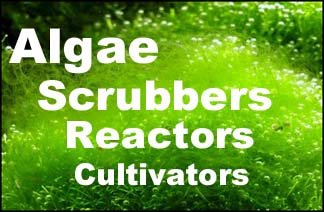What do all algae (and cyano too) need to survive? Nutrients. What are nutrients? Ammonia/ammonium, nitrite, nitrate, phosphate and urea are the major ones. Which ones cause most of the algae in your tank? These same ones. Why can't you just remove these nutrients and eliminate all the algae in your tank? Because these nutrients are the result of the animals you keep.
So how do your animals "make" these nutrients? Well a large part the nutrients comes from pee (urea). Pee is very high in urea and ammonia, and these are a favorite food of algae and some bacteria. This is why your glass will always need cleaning; because the pee hits the glass before anything else, and algae on the glass consume the ammonia and urea immediately (using photosynthesis) and grow more. In the ocean and lakes, phytoplankton consume the ammonia and urea in open water, and seaweed consumed it in shallow areas, but in a tank you don't have enough space or volume for this, and, your other filters or animals often remove or kill the phytoplankton or seaweed anyway. So, the nutrients stay in your tank.
Then, the ammonia/ammonium hits your rocks, and the periphyton on the rocks consumes more ammonia and urea. Periphyton is both algae and micro-animals, and is the reason your rocks change color after a few weeks from when they were new. Then the ammonia goes inside the rock, or hits your sand, and bacteria there convert it into nitrite and nitrate. However, the nutrients are still in your tank.
Also let's not forget phosphate, which comes from solid organic food particles. When these particles are eaten by microbes and clean up crews, the organic phosphorus in them is converted into phosphate. However, the nutrients are still in your tank.
So whenever you have algae or cyano "problems", you simply have not exported enough nutrients out of your tank compared to how much you have been feeding (note: live rock can absorb phosphate for up to a year, making it seem like there was never a problem. Then after a year, there is a problem).
So just increase your nutrient exports. You could also reduce feeding, and this has the same effect, but it's certainly not fun when you want to feed your animals



 Reply With Quote
Reply With Quote